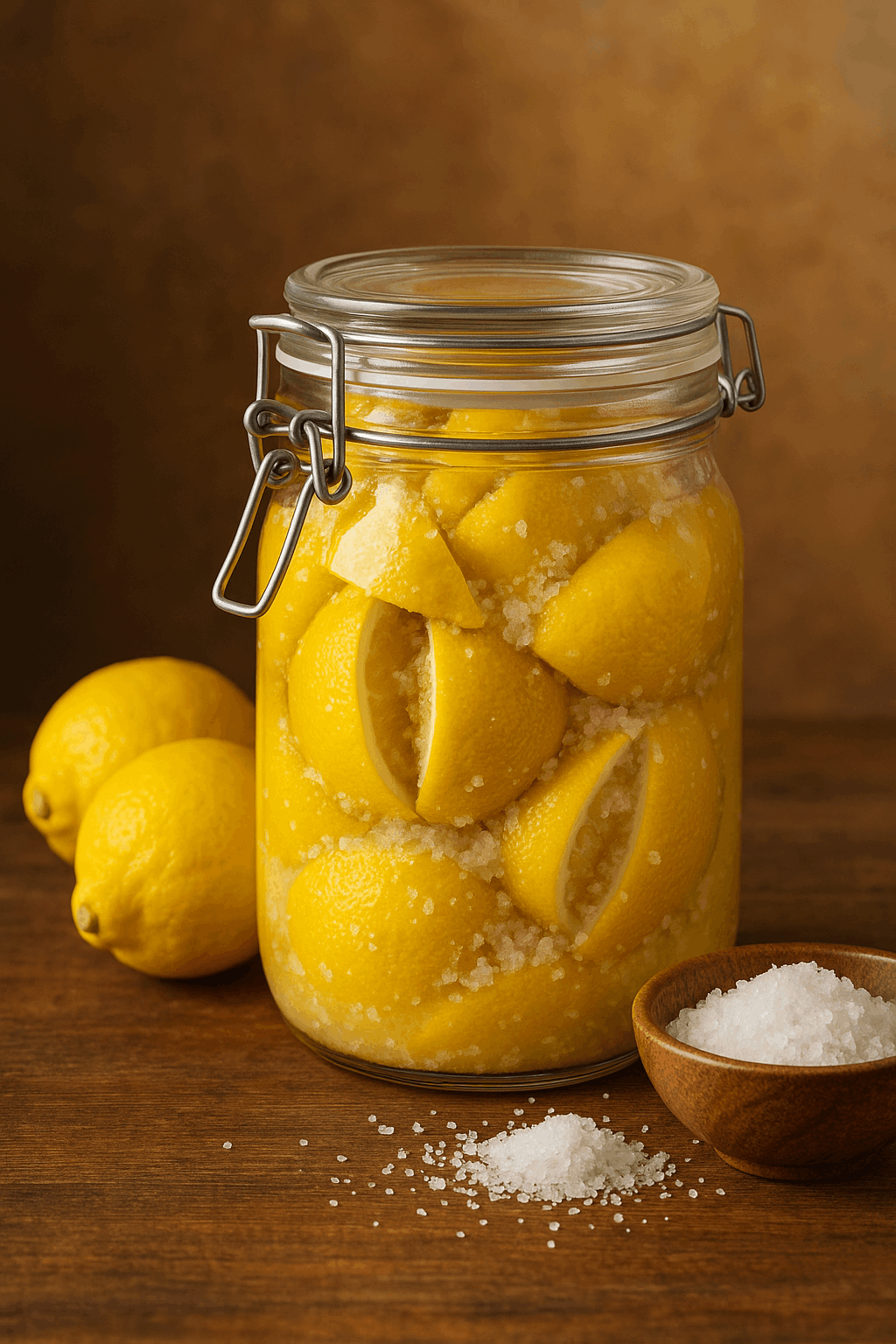

Salty-Citrus Preserved Lemons – The Essential Moroccan Pantry Staple for Tagines, Salads, and Stews
Preserved lemons are one of the most iconic and flavorful ingredients in Moroccan cuisine. Known for their bold, salty-citrus flavor and deep umami undertones, these lemons are traditionally fermented with nothing but salt and time. The result? A uniquely tangy, mellow, and slightly floral ingredient that transforms every dish it touches.
Used widely in Moroccan tagines, couscous dishes, lentil stews, roasted vegetables, and grilled meats, preserved lemons bring a signature North African brightness that balances rich spices and hearty ingredients. Whether finely chopped into salads or stirred into sauces and marinades, they offer complex flavor without needing extra salt or acid.
As more home cooks embrace fermented foods, global flavors, and zero-waste kitchen practices, preserved lemons have become a sought-after addition to modern pantries. They’re simple to make, long-lasting, and endlessly versatile — perfect for adventurous cooks who love bold, healthy, and low-waste ingredients.
Add them to roasted chicken, shakshuka, olive tapenades, or grain bowls for a true taste of Morocco — and a pop of citrus that’s anything but ordinary.
⦁ Small lemons (uniform size preferred).
⦁ Coarse sea salt.
1. Prep the Lemons
Wash and dry lemons thoroughly. Cut each lemon ⅘ of the way down lengthwise. Turn 90° and repeat, so they open like a flower but remain attached at the base.
2. Salt the Lemons
Sprinkle ¼ tsp of salt inside each cut. Pack lemons tightly into a sterilized jar, sprinkling more salt between layers.
3. Press and Cover
Juice will begin to release. Press the lemons down. If needed, squeeze extra juice from imperfect lemons to cover.
4. Cure & Store
Seal the jar and store in a cool, dark place for at least 3 months. Shake occasionally to redistribute brine.
🛒 Choosing Ingredients
✔ Small Lemons – Choose thin-skinned lemons (like Meyer or Eureka) of similar size for even curing
✔ Coarse Sea Salt – Use non-iodized coarse salt for best fermentation; avoid fine salt which dissolves too quickly
✔ Fresh Lemons for Juice – Keep a few extra lemons on hand to top off jars with fresh juice if needed
✔ Sterilized Glass Jar – Use a wide-mouth glass jar with a tight-fitting lid to prevent air exposure and spoilage
👩🍳 Preparation
✔ Wash Thoroughly – Scrub lemons under warm water to remove wax or surface residue
✔ Cross Cut, Not All the Way Through – Slice ⅘ of the way down in both directions so lemons stay intact but open up to hold salt
✔ Salt Generously – Don’t skimp on salt; it draws out moisture, prevents spoilage, and encourages fermentation
✔ Pack Tightly – Push lemons into the jar firmly to help release juice and reduce air pockets
✔ Top With Lemon Juice – Cover completely with lemon juice to avoid mold and ensure safe curing
🔥 Fermentation & Storage
✔ Cool, Dark Spot – Store at room temperature away from direct light for 3+ months
✔ Shake Occasionally – Gently shake the jar once a week to mix the salt and brine
✔ Look for Changes – Lemons will soften and turn slightly darker as they ferment — that’s a good sign
✔ Shelf Stable After Opening – Once cured, store in the fridge for up to 6 months; flavor deepens with time
🍳 Using Preserved Lemons
✔ Use the Peel Only – Rinse, discard the pulp, and finely chop the peel — that’s where the flavor is
✔ Add to Tagines & Couscous – Enhances lamb, chicken, and vegetable dishes with tangy complexity
✔ Great in Marinades & Dips – Blend into hummus, yogurt sauces, or olive tapenade for a Moroccan twist
✔ Start Small – A little goes a long way — ½ teaspoon of chopped peel can flavor an entire dish
📦 Zero-Waste Tips
✔ Use the Juice – Brine can add umami and brightness to dressings, grains, or cocktails
✔ Compost the Pulp – If not used, compost the flesh or blend into stocks for subtle citrus undertones
✔ Repurpose Jars – Once finished, reuse the jar and brine base to preserve a second batch or mix with chilies for a spicy version